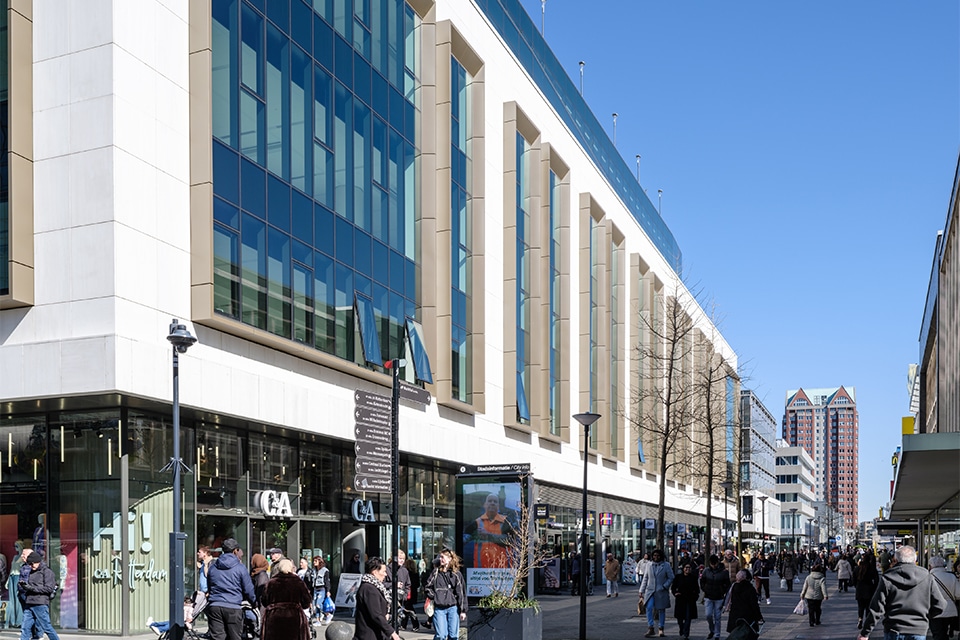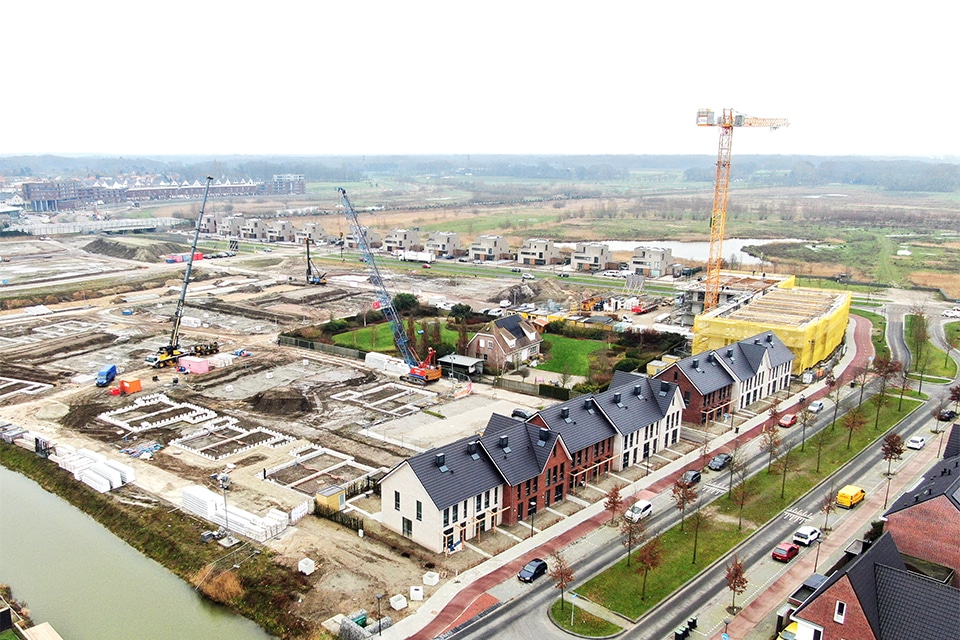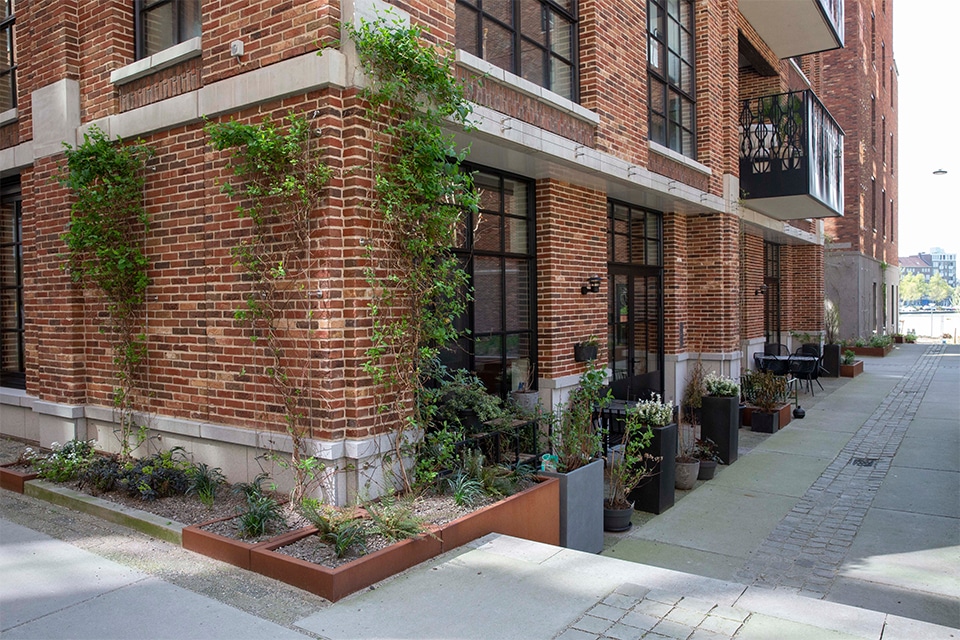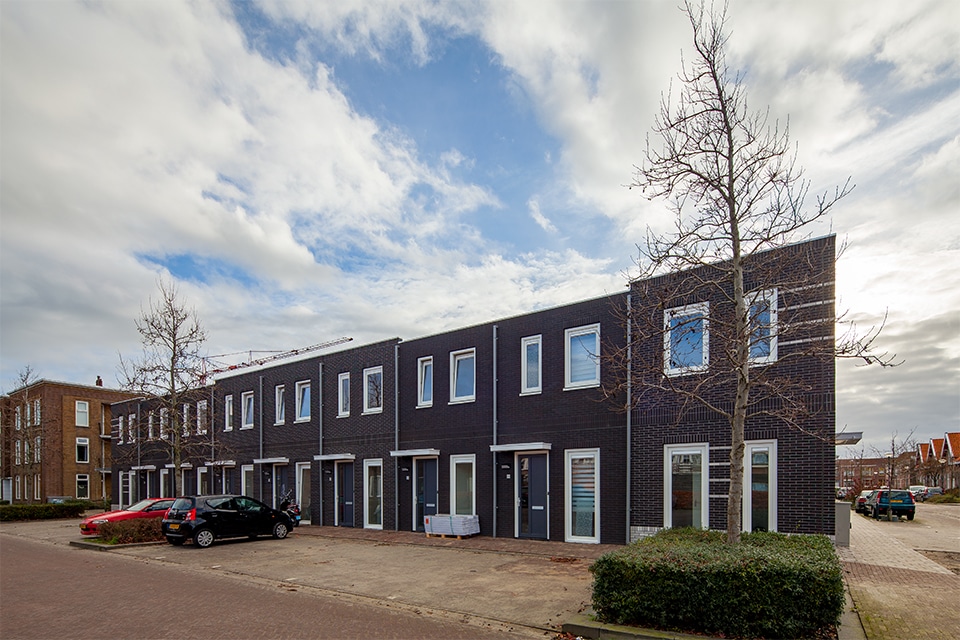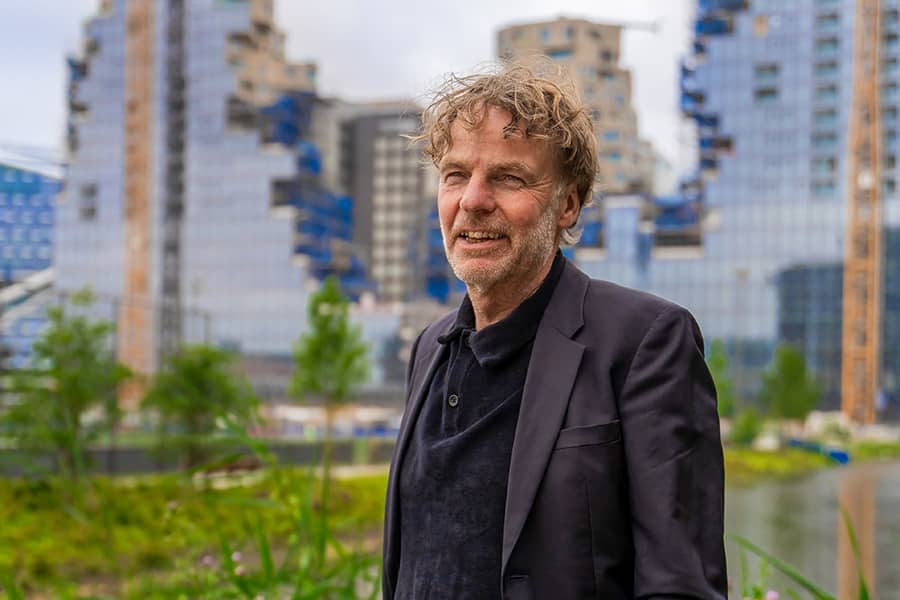
Designing for urban diversity
MVRDV is one of the most lauded Dutch architecture firms, with high-profile projects such as De Glazen Boerderij in Schijndel, Markthal Rotterdam, residential building Valley (Zuidas) and Depot Boijmans Van Beuningen, the world's first publicly accessible art depot. Placemaking of that nature is an important part of urban planning, says founder Winy Maas. "But we must always start from the spatial-social fabric."
In the public eye, a top architect is quickly known for his "icons. Maas, traditionally active in broader area developments, shakes his head. "Such projects can carry developments, as you see with the Market Hall, it's always about urbanism. And that remains a puzzle, which we work on with different stakeholders."
Urban design requires complex processes with many players, in which decision-making and implementation do not always go as quickly as desired. "It's perseverance," says the architect, who is sometimes executive designer of a subproject, other times supervisor of a total area development, as with the site of the Floriade 2022 in Almere. That lies as a counterpart to the center of Almere-Stad across the Weerwater and is intended to become a diverse residential neighborhood: Hortus. The municipality learned from the development process: a market party was supposed to carry it out, but that turned out not to be blissful, Maas says. "Sometimes it is better to develop it yourself. And to persevere, because the plan is good." The same goes for Almere Oosterwold, a growing community with private commissioning and design freedom for which MVRDV devised the development plan. "I hope that Oosterwold will eventually grow into a Dutch Christiania (a neighborhood in Copenhagen that functions as a free state; ed.). Getting on with it is crucial."
Million homes
The Netherlands has the task of building one million homes over the next decade, and MVRDV has tailored advice on that too through a roadmap. "Investing in vacancies, filling 'flinter spots' and taking a good inventory of the various areas: if we do that, we can achieve the targeted numbers without building meadows full." That goes far beyond housing, Maas says. "We also have to define and make visible the landscape units, like in the Green Heart, much better, and you can't put distribution centers or windmills everywhere. That can also be stacked or at sea." Realization of 80% of the total task in the Randstad is also neither feasible nor desirable. "People like to choose simplicity in order to make steps, we have to prevent everything from looking alike. As an urban planner, you have to start from the spatial and socio-cultural fabric. The Randstad is not Brabant; in Brabant, Roosendaal is not Eindhoven."
Abroad, the firm has a similar urban planning approach. In Bordeaux, for example, MVRDV is realizing a new urban district in an old barracks area, where the city enters the hills. "In several places in Bordeaux, colleagues are working in similar ways, but we don't compete with each other; each does its own thing and avoids copying, which is best for the city. Of course, in a consensus society like the Netherlands this is different than in France; we as a firm always strive for urban diversity."
